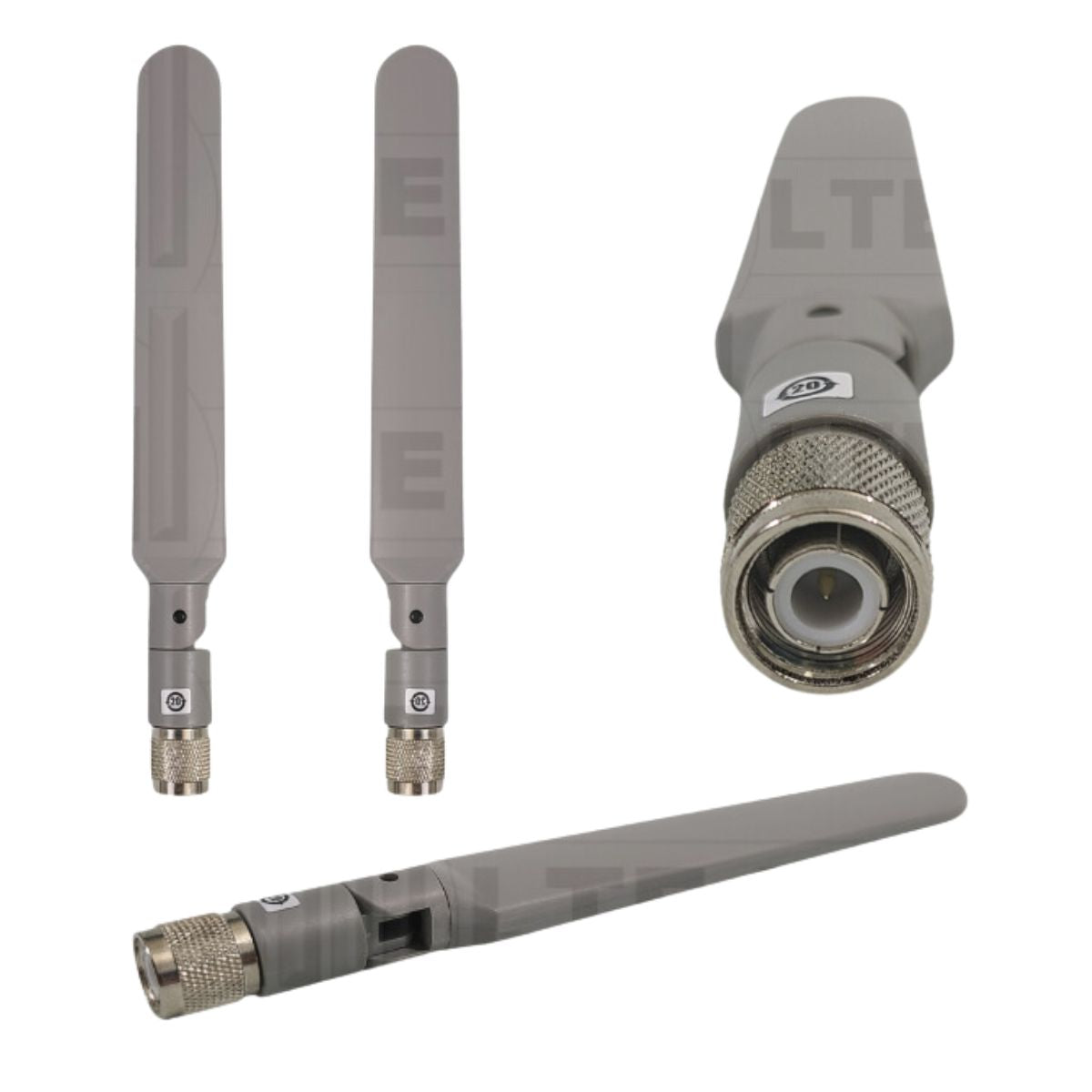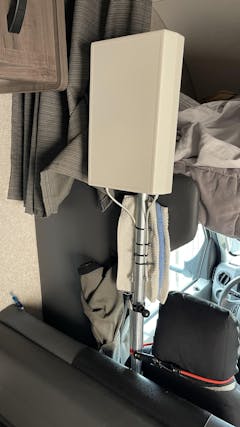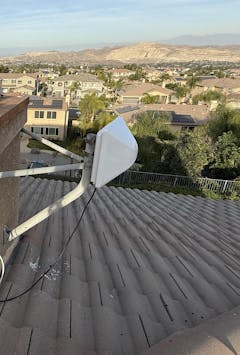
Product Details
Cisco 806-2170MHz Cellular Antennas (TNC Connector) - 2 Pack
The Cisco 806-2170MHz cellular antenna is an Omni-directional dipole antenna designed for indoor use on cellular routers. It is compatible with enhanced high-speed modems and WAN cards, and supports 4G Long Term Evolution (LTE) networks, as well as many 5GNR bands.
The antennas have the following hardware features:
- Articulating Joint—It can be rotated 360 degrees and is capable of maneuvering into three stop positions: 0 degrees, 45 degrees, and 90 degree.
- Male Threaded Neill-Concelman (TNC) Connector—It lets you directly mount the antenna to a TNC bulkhead connector.
These antennas work great with the Cisco 4G LTE antenna Extension Base for these single-port antennas and are designed for use with portable antennas operating at frequencies up to 6 GHz that connect to 4G LTE wireless enhanced high-speed modems and WAN interface cards using a threaded Neill-Concelman (TNC) male connector. The base allows for remote placement of the antennas for optimal reception. Includes a 3m coax cable.
These are good performing antennas and may be used for upgrading 4G LTE routers to include the WE8261 and the WG35261 using a Mini PCI-E (i.e., MC7455, MC7354....) or M.2 (i.e., EM7565, EM7455....) modem card.
This listing is for TWO (2) Cisco cellular antennas
ANTENNA SPECIFICATIONS:
| Specification | Description |
| Maximum input power | 25W |
| Connector | TNC male |
| VSWR1 | 2.5:1 or less |
| Characteristic impedance | 50 ohm |
| Antenna radome color | Grey |
| Antenna dimensions | 7.58 in (L) x 15/16 in(W) x 5/8 in (D) |
| Operating temperature | -22° to 158°F (-30° to 70°C) |
| Operating frequency ranges | 806 MHz - 2170MHz |
| Maximum Peak Gain | 0dBi |
1 VSWR = voltage standing-wave ratio
Safety Instructions
Warning: IMPORTANT SAFETY INSTRUCTIONS
A warning means danger. You are in a situation that could cause bodily injury. Before you work on any equipment, be aware of the hazards involved with electrical circuitry and be familiar with standard practices for preventing accidents.
Follow these safety instructions when installing the antenna.
Antenna Installation Warning
Warning: In order to comply with FCC radio frequency (RF) exposure limits, antennas should be located at a minimum of 7.9 inches (20 cm) or more from the body of all persons.
Warning: When installing or replacing the unit, the ground connection must always be made first and disconnected last.
Caution: Do not install the antenna in an outdoor environment.
Caution: For your physical safety, and to help you install your antenna successfully, follow these safety precautions.
- Plan your installation procedure carefully and completely before you begin.
- Choose your installation site with both safety and performance in mind.
- If you are installing an antenna for the first time, for your own safety as well as others, seek professional assistance. Your sales representative can explain which mounting method to use for the size and type of antenna you are about to install.
- Before you install an antenna, contact your account representative to explain which mounting method to use for the size and type of antenna that you are about to install.
Installation Instructions
The following section contains information for installing the Cisco 4G LTE antenna:
This antenna is designed to be mounted either directly or on an antenna extension stand to any 3G/4G wireless Router, ISR, LTE and LTEA NIMs and 3G/4G EHWICs with a TNC connector by threading it onto the mating connector. Refer to the routers technical documentation for recommendations of direct mounting of antenna to the router versus installing the antenna on an antenna extension stand. Mount and deploy the antenna at the 0° position, 45° position, or the 90° position, and then change that position at will. The rotation of the antenna into the proper position can take place while the antenna is still loose on the mating connector. No software is required for this installation.
In addition to the antenna orientation, the installation location of 4G routers wireless EHWIC plays a significant role in determining overall network performance. Routers located at the farthest coverage points might have 10 to 50 percent of the bandwidth available compared to routers located closer to the cellular base station tower.
Because antennas transmit and receive radio signals, their performance can be adversely affected by the surrounding environment, including physical obstructions. Radio frequency (RF) interference may occur between wireless systems located close to each other, especially if the antennas of these systems are located close to each other.
Follow these guidelines to ensure the best possible performance:
- When used on a modular router with an EHWIC or a NIM module, always mount the antenna on an appropriate extension cable and antenna stand. The antenna performance, and hence that of the router, will not be optimal if mounted directly to an EHWIC or NIM module.
- Mounting of the antenna directly to smaller physical size routers is allowed.
- For optimal performance, space multiple antennas apart by at least 17 inches (43 cm).
- Wherever possible, mount the EHWIC (or NIM) and antenna where the cellular base station or tower are within sight and without physical obstructions. Barriers along the line of sight between the device and the local base station will degrade the wireless radio signals. EHWICs, NIMs and antennas should be installed above floor level in office environments or near the ceiling for better performance because most obstructions tend to be near floor level.
- The density of the materials used in a building’s construction determines the number of walls the signal must pass through while still maintaining adequate coverage. Consider the following before choosing the location for installing your antenna:
- –Paper and vinyl walls have very little effect on signal penetration.
- –Solid and precast concrete walls limit signal penetration to one or two walls without degradation of coverage.
- –Concrete and wood block walls limit signal penetration to three or four walls.
- –A signal can penetrate five or six walls constructed of drywall or wood.
- –A thick metal wall or wire-mesh stucco wall causes signals to reflect back and causes poor penetration.
- Avoid mounting the antenna next to a column or vertical support that could create a shadow zone and reduce the coverage area.
- Keep the antenna away from reflective metal objects such as heating and air-conditioning ducts, large ceiling trusses, building superstructures, and major power cabling runs. If necessary, use an extension cable to relocate the antenna away from these obstructions






